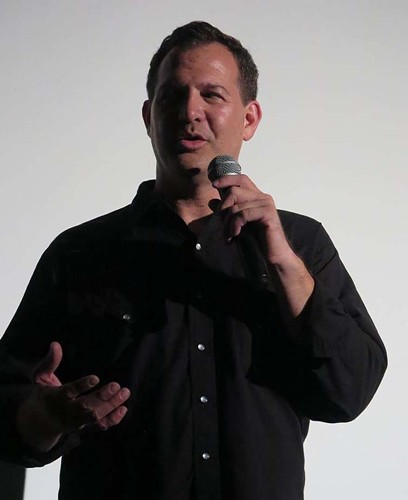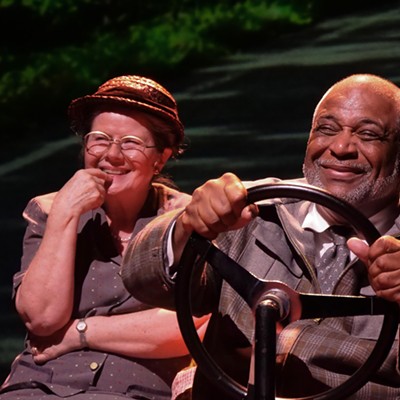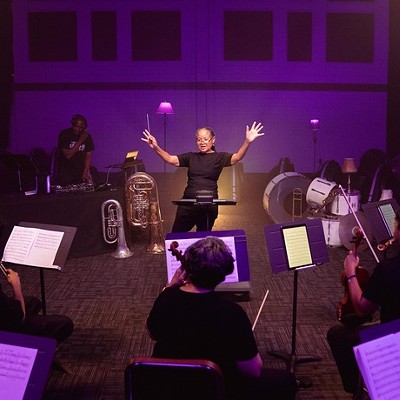For the seventh anniversary of the Museum of Fine Arts, Houston’s “Jazz on Film” series, Founder and Curator Peter Lucas has once again put together a screening schedule as varied as the music itself.
Running over three weekends, it includes a mixture of material from the Jimmy Stewart drama Anatomy of a Murder (with its Duke Ellington-Billy Strayhorn score), and the concert documentary Jazz on a Summer’s Day about the Newport Jazz Festival (with performances by Louis Armstrong, Thelonious Monk, Mahalia Jackson, and Gerry Mulligan to name a few), to rarities (the experimental Beat-era Pull My Daisy and The Cry of Jazz with Sun Ra). All were released in 1959, something of a theme for Lucas in scheduling this particular slate of films.
“The focus on 1959 has occurred to me for a while, and we’ve already shown some films from that year. It was pivotal year for jazz and film and their intersection on a lot of levels,” he says. “Jazz really became the kind of score for a new kind of American soundtrack.”
The series will also showcase the Houston premiere of last year’s documentary A Tuba to Cuba. Directed by Danny Clinch and T.G. Herrington, it follows the New Orleans-based Preservation Hall Jazz Band as they travel to the island nation for a series of shows in venues varying from elegant orchestra halls to impromptu Second Line street parties.
The Band’s director/tuba player Ben Jaffe – whose parents founded the Hall as a place to hear live traditional New Orleans music after they moved to the city in 1961 – serves as the main narrator. There are also multiple interview clips of his late father, who played tuba in the original Band.
But as the documentary unfolds, other players emerge with their own stories and thoughts on how the trip affects them, often with great emotional depth. Sort of like a jazz version of the Avengers with Jaffe as a hard-blowing Captain America.
There’s Charlie Gabriel, the now 86-year-old saxophonist/clarinetist who serves as the wise guide and a father figure to Jaffe and the group. He’s also a musical reservoir whose permanently flattened and pitted fingertips (which he shows off for the camera) show the physical results of a lifetime of playing.
And there’s drummer Walter Harris who overcame poverty, a crack problem, and prison time before he joined the lineup. He has a tear-inducing spiritual encounter at a shrine with the grandson of a famous Cuban drummer Tata Güines that connects him to the history and music of Africa.
In the end, A Tuba to Cuba is about music and a series of performances, but also about cultural connections and dialogue, politics, bridge-building, fathers and sons, homelands, and the commonality of culture and humanity. All viewed through—but not constricted by—the lens of jazz music.
“I tend to look for stuff that will surprise audiences a little bit, that breaks them out of expectations, and this film definitely does that. It almost feels like ‘is this about jazz or not?’” Lucas says. “I like that it’s about the human side of being immersed in a musical culture. It’s about musical beings that connect with other musical beings.”
He adds that he tends to come to new films with jazz themes critically, almost ticking off in his head the way that they could go wrong. And in the case of A Tuba to Cuba, he thought that it would be a more straightforward travelogue.
So he was pleasantly surprised by the finished film that Clinch and Herrington actually put together. “I’ve always said that ‘Jazz on Film’ is great for the jazz aficionados, but you don’t have to be one to get something out of it. Everybody can get into this stuff.”
As for Anatomy of a Murder, while not a “jazz film,” it does feature a score that presents Duke Ellington as a serious film composer, not a jazzman dabbling in cinema. “It ushered in a new position for the jazz composer as creating American music, out of the segmented ghetto of jazz,” Lucas says. Sort of – as it’s suggested to him – A Charlie Brown Christmas is not a “jazz cartoon,” but the Vince Guaraldi score is probably many children’s first exposure to the music.
Finally, Lucas understand that people today have living rooms with giant TV screens and multi-point speaker systems to watch films in the comfort of their own homes. But it still doesn’t match up to seeing the material on a huge theater screen with a professional-level sound system.
“Most of these films we have are in 35mm prints. And it’s gotten harder and harder to get actual film prints. I’m not the guy to rail against digital, but this is likely the last chance you might have to see films like this on a big screen. It just won’t be possible in a few years,” Lucas sums up. “And that may be nerdy saying that. Plus, you’ll be with other people. And that’s what I’ve really enjoyed about this series. The audience is all sharing an experience together.”
The "Jazz on Film" series runs June 7-23 at the Museum of Fine Arts, Houston, in the Brown Auditorium at 1001 Bissonnet. For a complete schedule of films, times, and ticket pricing, call 713-639-7515 or visit Mfah.org/film
Support Us
Houston's independent source of
local news and culture
account
- Welcome,
Insider - Login
- My Account
- My Newsletters
- Contribute
- Contact Us
- Sign out

Ben Jaffe (with tuba) and Charlie Gabriel (with clarinet) of the Preservation Hall Jazz Band lead an impromptu New Orleans-style "Second Line" march through a neighborhood in Cuba.
Photo by Danny Clinch for Blue Fox Entertainment/Courtesy of the MFAH Houston
[
{
"name": "Related Stories / Support Us Combo",
"component": "11591218",
"insertPoint": "4",
"requiredCountToDisplay": "4"
},{
"name": "Air - Billboard - Inline Content",
"component": "11591214",
"insertPoint": "2/3",
"requiredCountToDisplay": "7"
},{
"name": "R1 - Beta - Mobile Only",
"component": "12287027",
"insertPoint": "8",
"requiredCountToDisplay": "8"
},{
"name": "Air - MediumRectangle - Inline Content - Mobile Display Size 2",
"component": "11591215",
"insertPoint": "12",
"requiredCountToDisplay": "12"
},{
"name": "Air - MediumRectangle - Inline Content - Mobile Display Size 2",
"component": "11591215",
"insertPoint": "4th",
"startingPoint": "16",
"requiredCountToDisplay": "12"
}
,{
"name": "RevContent - In Article",
"component": "12527128",
"insertPoint": "3/5",
"requiredCountToDisplay": "5"
}
]
KEEP THE HOUSTON PRESS FREE...
Since we started the Houston Press, it has been defined as the free, independent voice of Houston, and we'd like to keep it that way. With local media under siege, it's more important than ever for us to rally support behind funding our local journalism. You can help by participating in our "I Support" program, allowing us to keep offering readers access to our incisive coverage of local news, food and culture with no paywalls.
Bob Ruggiero has been writing about music, books, visual arts and entertainment for the Houston Press since 1997, with an emphasis on classic rock. He used to have an incredible and luxurious mullet in college as well. He is the author of the band biography Slippin’ Out of Darkness: The Story of WAR.
Contact:
Bob Ruggiero
Trending Arts & Culture
- Bring a Friend With You to See A.D. Players' Heartwarming Production of Driving Miss Daisy.
- Reviews For The Easily Distracted:
Boy Kills World - The 10 Best And Most Controversial Hustler Magazine Covers Ever (NSFW)
-
Sponsored Content From: [%sponsoredBy%]
[%title%]

Don't Miss Out
SIGN UP for the latest
arts & culture
news, free stuff and more!
Become a member to support the independent voice of Houston
and help keep the future of the Houston Press FREE
Use of this website constitutes acceptance of our
terms of use,
our cookies policy, and our
privacy policy
The Houston Press may earn a portion of sales from products & services purchased through links on our site from our
affiliate partners.
©2024
Houston Press, LP. All rights reserved.






